
About Andrew Cusack
 Writer, web designer, etc.; born in New York; educated in Argentina, Scotland, and South Africa; now based in London.
Writer, web designer, etc.; born in New York; educated in Argentina, Scotland, and South Africa; now based in London. read more
News
Blogs
Reviews & Periodicals
Arts & Design
World
France
Mitteleuropa
Knickerbockers
Argentina
The Levant
Africa
Cape of Good Hope
Netherlands
Scandinavia
Québec
India
Muscovy
Germany
Academica
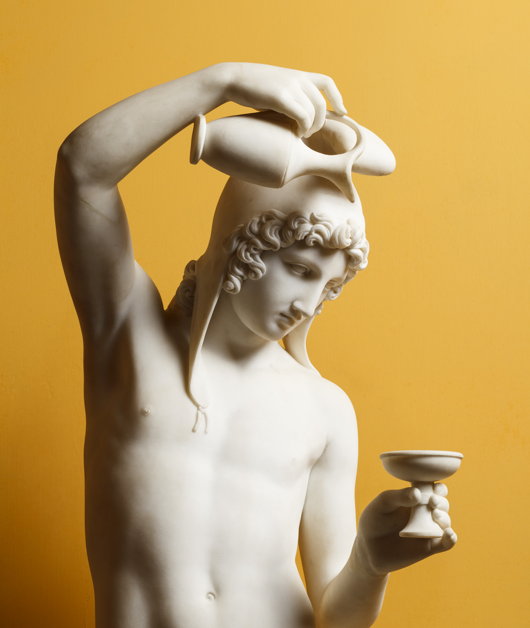
Beauty and Revolution
“Schönheit und Revolution: Klassizismus 1770-1820”
Städel Museum, Frankfurt am Main
WHEN IT COMES to styles, I am an omnivore. There are die-hard partisans, like Pugin, but I find the Baroque, the Gothic, the Classical — all are welcome to me. There is always some tiresome bore who, upon hearing any particular style of art or architecture praised, will immediately launch into a tirade against the more negative connotations commonly associated with that style. Gothic is close-minded! Mannerism is affected! The Biedermeier is bourgeois!
Well… ok… to an extent. But, in truth, we brush aside these pedants and appreciate whatever is beautiful wherever it is to be found. Art in its many forms is a giant sponge to squeeze and collect, savor, what comes out of it.
Neoclassicism in particular has its critics, but a new exhibition at the Städel Museum in Frankfurt seeks to highlight the vitality of the style and place it within a general artistic framework as a foundation for later Romanticism.
“Beauty and Revolution: Neoclassicism 1770-1820” shows nearly a hundred works from the period including such painters and sculptors as Anton Raphael Mengs, Thomas Banks, Antonio Canova, Jacques-Louis David, Bertel Thorvaldsen, Johann Gottfried Schadow, Jean-August-Dominique Ingres.
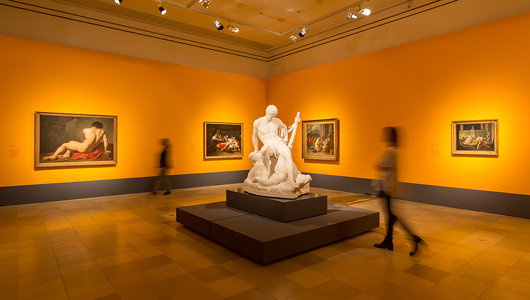
Too often Neoclassicism is pigeonholed as the antithesis of the Gothic and Romantic which emerge more or less contemporaneously. This major survey exhibition seeks to lift the veil on the varied and often contrasting impulses within the Neoclassical school of art. The opening and closing years of the show are treated loosely: the development of Neoclassicism is explored as late as 1870, with particular interest in its influence on Romanticism. Much of the emphasis of “Beauty and Revolution” is on the city of Rome itself: the great destination for artists, writers, philosophers of art, and other like-minded souls on either side of 1800.
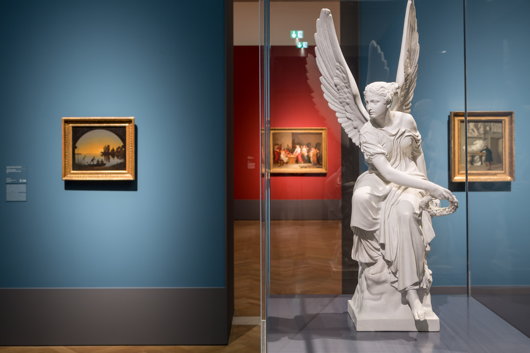
The representation of historical and mythological scenes is perhaps an attempt to find meaning amongst peoples who had been stripped of their spiritual, moral, and philosophical context. For much of Latin Europe, this loss was enforced by the French Revolution and ensuing wars, while for many Northern Europeans it was the gradual deracination of Christianity following the advent of Protestantism. Both deprivations took place in an overall context of Enlightenment thinking.
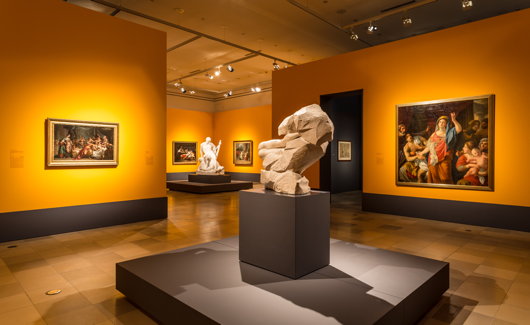
Last Sunday I heard Mass at the Augustinerkirche in Vienna and was amazed by the beauty of Canova’s tomb for Maria Christina of Austria. This show exhibits Canova’s statue of the Greek goddess Hebe together with Thorvaldsen’s take on the same deity — the first time the two have been exhibited together.
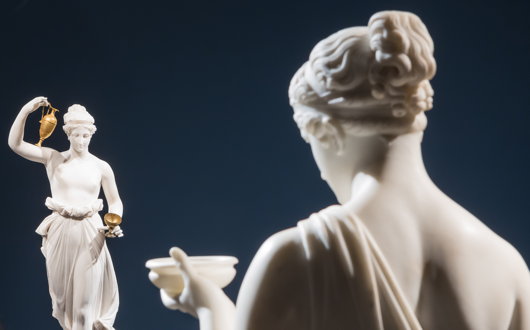
“Beauty and Revolution” is curated by Dr Eva Mongi-Vollmer of the Städels Museum and Dr Maraike Bückling of the Liebieghaus Skulpturensammlung and is sponsored by the Kulturfonds Frankfurt RheinMain as part of the project Impuls Romantik, as well as the Hessische Kulturstifting and the City of Frankfurt am Main. A comprehensive catalogue is available in German from Hirmer. Well worth a look-in for those who find themselves in the Frankfurt area, I should think.
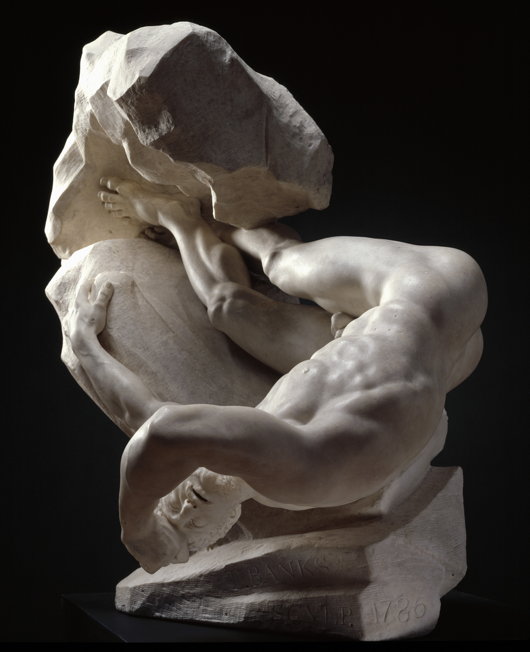
1786, Marble, 33¼ x 35½ x 23 in.
Royal Academy of Arts, London
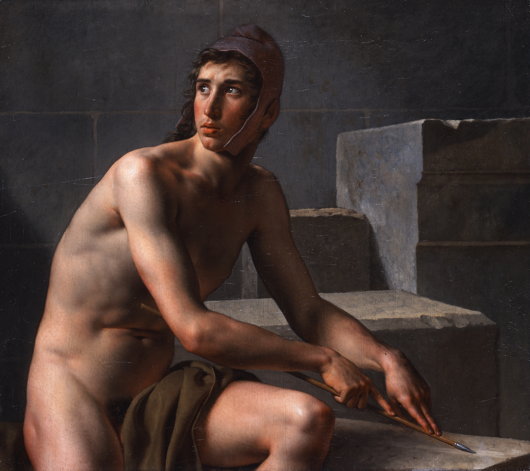
1812, oil on canvas, 25⅓ x 28½ in.
Ny Carlsberg Glyptotek, Copenhagen

1803–1814, marble, height 57½ in.
Liebieghaus Skulpturensammlung, Frankfurt am Main
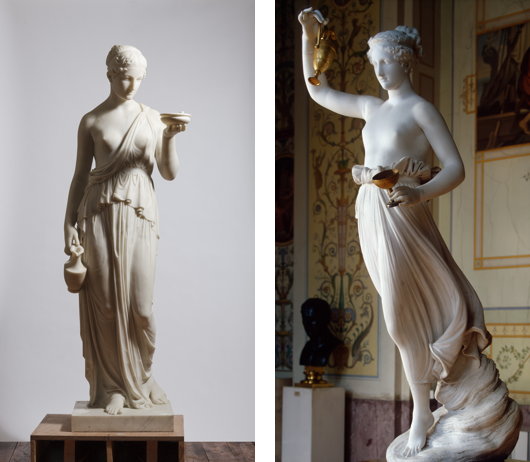
1800–1805, marble, height 62 in.
State Hermitage Museum, Saint Petersburg
1815–1823, marble, height 61½ in.
Thorvaldsens Museum, Copenhagen
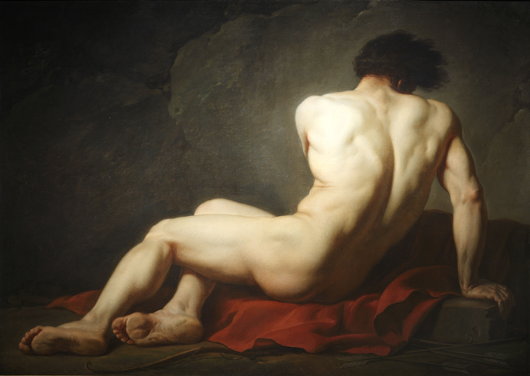
1780, oil on canvas, 48 in. x 67 in.
Musée d’art Thomas-Henry, Cherbourg-Octeville
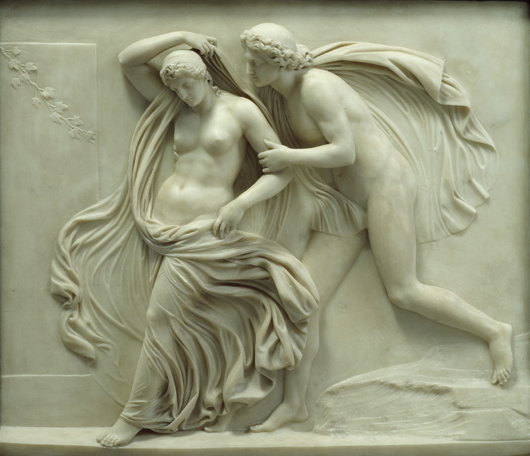
c. 1790-1794, marble relief, 19 in. x 21½ in. x 2¾ in.
Royal Academy of Arts, London
Frontispiece:
1816, marble, height 53 in., Thorvaldsens Museum, Copenhagen
Search
Instagram: @andcusack
Click here for my Instagram photos.Most Recent Posts
- Gellner’s Prague December 19, 2024
- Monsieur Bayrou December 18, 2024
- Dempsey Heiner, Art Critic December 17, 2024
- Vote AR December 16, 2024
- Articles of Note: 12 December 2024 December 12, 2024
Most Recent Comments
Book Wishlist
Monthly Archives
Categories



Thorwaldsen wins!